News & Articles
Breadcrumb
Asset Publisher
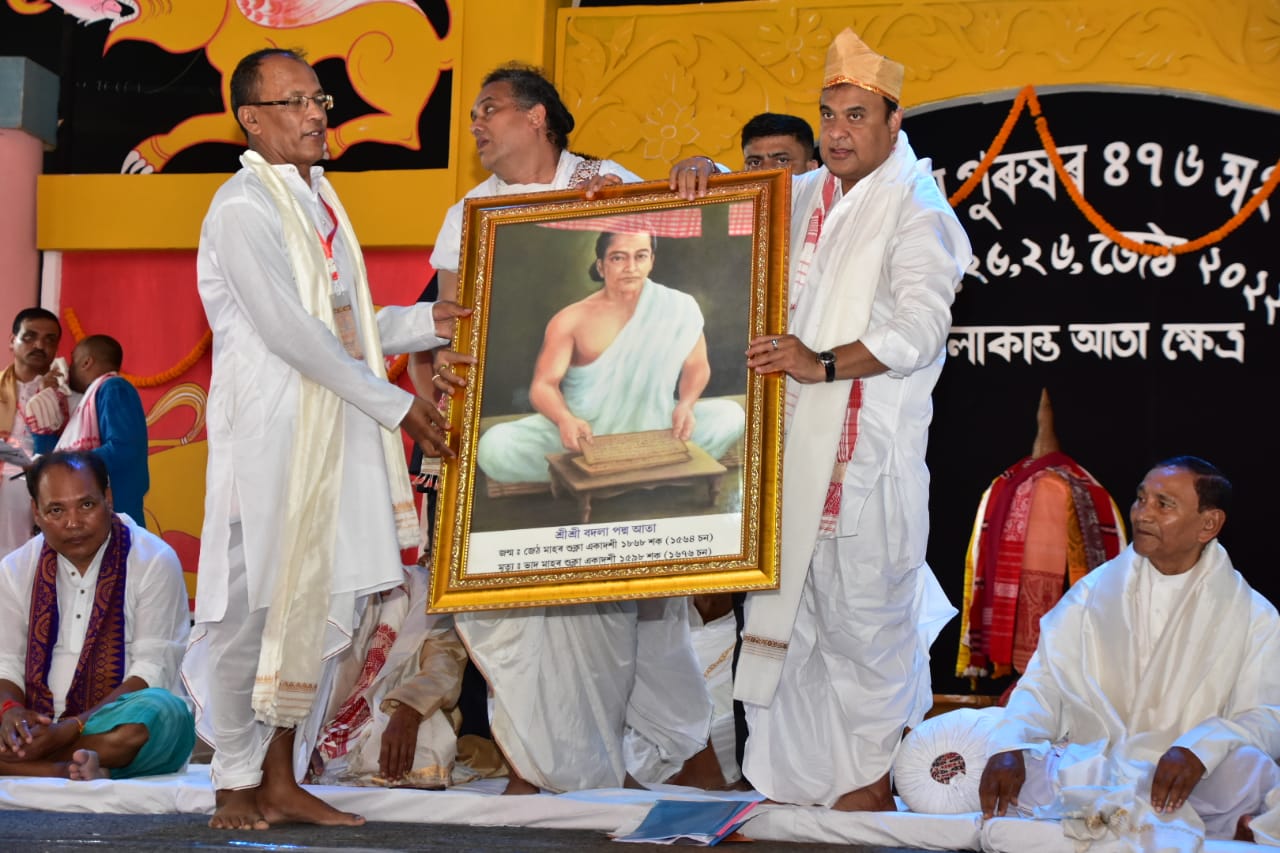 CM participates in 476th birth anniversary celebrations of Shri Shri Bodola Padma Aata
CM participates in 476th birth anniversary celebrations of Shri Shri Bodola Padma Aata
09 Jun, 2024
Chief Minister Dr Himanta Biswa Sarma participated in the 476th birth anniversary celebrations of Shri Shri Bodola Padma Aata at Shri Shri Uttar Kamalabari Satra, Majuli.
He also inaugurated Shri Shri Uttar Kamalabari Satra’s Kirtan Ghar, which was constructed with ₹50 lakh provided by Govt of Assam.
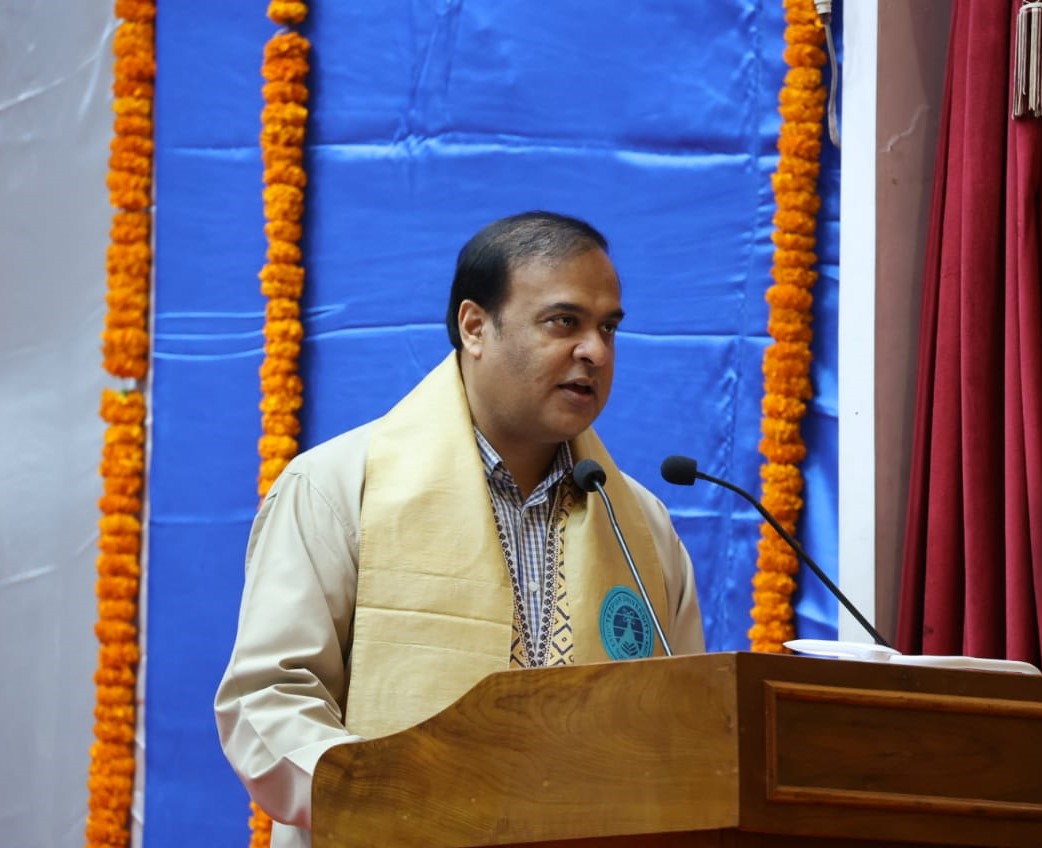 "Freedom is set to become more meaningful for the citizens of the eight sister States"- Written by Chief Minister of Assam Dr Himanta Biswa Sarma
"Freedom is set to become more meaningful for the citizens of the eight sister States"- Written by Chief Minister of Assam Dr Himanta Biswa Sarma
09 Jun, 2024
As I sit down to write this piece, the Assam Assembly is in session. Many important and transformational pieces of legislation are being passed. Some are regulatory, but most of them relate to the developmental agenda of the State, to take Assam among the top five states of the country in the next five years.
I have completed more than three decades in public life. I have been blessed with multiple opportunities to work for the people of the North-east — Assam in particular — in various capacities. Many milestones have been achieved. Many challenges remain — some very critical, given the unique geography of the region. However, I am convinced that most of our disabilities emanate from historical and legacy factors which have hindered our growth.
- Freedom is set to become more meaningful for the citizens of the eight sister State The last seven years of the National Democratic Alliance regime have been truly transformational for us in the region. Today, the stage seems set, for a higher growth trajectory, for the entire north-east region. Before we proceed further, a peep into the history of our geography — North-east India — looks relevant.
History of neglect From the Mahabharata, till the beginning of the Islamic rule, the entire North-east had close cultural and economic linkages with the rest of Bharat Varsha. This relationship took a hostile turn around seven centuries ago when Islamic invaders began to seize control of Delhi. For the next 500 years, our ancestors continued to fight multiple battles, including the legendary battles of Saraighat and Itakhuli, to keep the Islamist invaders out of the North-east. Assam’s cultural and religious monuments were destroyed by the invaders. Unfortunately, Assam’s heroic struggle against these barbaric attacks found no mention in history books. The then undivided Assam was one of the most ardent participants against the colonial struggle, but the narratives of Assam, particularly events such as Phulaguri Dhawa, Patharughator Ran, and the immense contributions of Rani Gaidinliu, Tirat Singh, Kushal Konwar, Kanaklata Barua and many more find no resonance. Colonial rule saw an exploitative administration that was solely focused on the economic exploitation of tea and rubber. Demarcation of inner lines was based on revenue capability and not on the basis of ethnic and cultural considerations. On the other hand, since the 1935 Act, the British launched a cultural project to ‘civilize’ various tribes of the North-east. Nonetheless, beginning from the Phulaguri Dhawa to the Garo-Jaintia rebellion to the Quit India Movement, the brave people fought valiantly. British rule sowed the seeds for inter-regional disputes and communal politics. This unfair trend was taken further by the Congress party in the decades ahead. Congress’s neglect of core issues India’s North-east, or the then undivided Assam, is a classic case how a vibrant, regionally connected region with high rate of economic growth of 4% above the national growth rate could be turns into a peripheral, landlocked zone by a process of neglect and policy paralysis by then successive ruling Congress dispensations. Disruption of traditional routes of trade, commerce and connectivity ; Nehru’s insensitivity towards Assam, a calibrated and disadvantageous model of Partition in the eastern sector , the great earthquake, non-cognisance of Assam’s claim over economic resources, top down planning and development model, continuous neglect of Assam’s immigration and identity issue made the North-east region a peripheral zone both in terms of development framework and national imagination. In all critical issues such as Centre-State federal relations, refugee crisis, control over resources such as oil, tea and timber, illegal immigration issues and crucial internal and external security issues, the region faced a situation of ‘internal colonialism’ from its own government sitting in Delhi. The neglect from Delhi is epitomised on multiple occasions. The year is 1962. I am referring to Nehru’s insensitive attitude towards Assam when he bade farewell to Assam on the eve of the Chinese attack. I can say that the history of the North-east will never be kind to the Congress party and its leaders. I myself was a part of the Congress party for several years but I realised that successive leadership of the party had a clear interest to keep the region under-developed, neglected, and divided. Until 2014, Delhi harboured a strange theory that rapid creation of infrastructure in the border areas could provoke our neighbours, hence many villages were purposefully kept outside power and road grids for several decades even after Independence. Ushering in peace The entire development philosophy of the region changed after the coming of the Bharatiya Janata Party (BJP) government under Prime Minister Atal Bihari Vajpayee, and later subsequently under Prime Minister Narendra Modi. For the first time, under Mr. Vajpayee, North-east India began to get a transparent deal, of development and progress. This was the time when the central government created a separate, dedicated Department of Development of North-Eastern Region (DoNER) to ensure all-round development. This was also the time when the East-West connectivity corridor was launched. The biggest priority of the BJP has been to bring the curtain down on long drawn conflict which have jeopardised our past, burdened our present and threatened our future. Inspite of having a Prime Minister from Assam, Assam was deprived of its due in oil royalty which was rectified by the BJP government. Manipur’s longest economic blockade came to an end after the installation of the first BJP government in the State. The formation of NEDA, which I am closely associated with, was a significant step to help resolve several of these disputes and give greater voice to the various stakeholders of the North-east. The Bodo Accord, the LBA with Bangladesh, the NLFT agreement and the Bru-Reang Agreement are cases to point. Since 2014, insurgency-related incidents have reduced by 80%, civilian deaths have reduced by 99% and over 3,000 militants have surrendered since. These anti-insurgency operations have not happened in isolation. They have been accompanied by improved governance on the ground, choking the smuggling route through better policing and a genuine political will to bring peace and demonstrated intention to devolve power to the people via Autonomous Councils. All this is happening under the guidance of Home Minister, Amit Shah. Mr. Shah has handheld each one of us in the region — it is a touch of healing, and importantly, of support. I will briefly touch on the border issues. These disputes emerged after States such as Nagaland, Meghalaya, Arunachal Pradesh and Mizoram were carved out of undivided Assam without delineating the border — the issue was kept open for the posterity to resolve. Given that all North-eastern States are now ruled by non-Congress governments, we now have a sincere chance to put the past behind us.
Future growth engines The region has been witnessing a massive infrastructural innovation. Prime Minister Narendra Modi has been personally monitoring the implementation of these projects. The BJP firmly believes that politics in democracy is a tool, an opportunity to serve the people and the nation. It was this vision with which the BJP fought the Assembly polls in Tripura and dismantled the Left Front government of 25 years. The NDA Government restored people’s faith and launched a series of development projects in the region. The North-east is now experiencing freedom in the true sense. Not recently, cities across the North-east would shut down after sunset, power supply would be erratic and roads were notoriously horrible. Cities are now seeing a vibrant nightlife due to the remarkable improvement in law and order. For the first time, every North-east State will be connected by rail. Air connectivity has improved tremendously. The Prime Minister has ensured that the North-east becomes the fulcrum of India’s Act East Policy. The Kaladan Multi-modal Transit Transport Project, the India-Myanmar-Thailand Trilateral Highway Project, Rhi-Tiddim Road Project, and several other projects will strengthen our Act East Policy. In Assam, we have made tremendous progress in health and education parameters. From being a remote region riddled with insurgency, the North-east is entering in a phase of rapid growth and stability. I am very confident about the future of the North East. I foresee a growing contribution of the North-eastern States to National GDP and we will collectively work to ensure India becomes a $5 trillion economy. We are celebrating our 75th Independence Day with a strong belief that freedom is set to become more meaningful for our five crore fellow citizens who live in our eight sister States [Arunachal Pradesh, Assam, Manipur, Meghalaya, Mizoram, Nagaland, Tripura and Sikkim]. It is important we recollect the past and ensure that we do not repeat any of the historical mistakes in the present or the future. (The article was published in "The Hindu" on 15 August 2021)
 'How BJP won four states' - Written by Chief Minister of Assam Dr Himanta Biswa Sarma
'How BJP won four states' - Written by Chief Minister of Assam Dr Himanta Biswa Sarma
09 Jun, 2024
At the outset, I would like to compliment my fellow karyakartas, party leaders and fellow chief ministers for the BJP’s spectacular victory in the recently concluded assembly polls. I have been asking myself what could have led us to this historic victory.
The year 2014 has been a watershed moment in the history of Indian polity. A new model of administrative structure and governance that puts people at the heart of its delivery was introduced that year. The outcomes of the recently concluded assembly elections are a testimony that the Modi model of governance has provided a recipe for the BJP’s success across the country.
The narrative constructed by opinion makers that the Modi factor is a force to reckon with only in the Lok Sabha elections and does not have much of a relevance in state polls has led to many miscalculations by opposition parties. The myth of anti-incumbency and caste-based experiments have not worked for them: Voters voted unanimously for governance and development. These results have questioned the conventional political wisdom and have decisively debunked the petty politics that does not have good governance at its core.
For the first time in many years, Uttar Pradesh (after 37 years) and Uttarakhand re-elected the party that ran the outgoing government. No political pundit or strategist could have predicted this electoral miracle a few years ago.
So, what is this Modi model of governance? Having been a chief minister for the last 10 months, I have been observing it from close quarters, and striving to ensure its success in Assam. This model is rooted in the exceptional trust and affection people have for the prime minister. And this is inspired by the principles of cooperative federalism, wherein the state government works in complete sync with the Prime Minister’s Office and other central ministries to ensure high precision last-mile delivery of the prime minister’s flagship schemes. The double-engine governance model enables states to complement the Centre in ensuring the implementation of schemes. This is turning out to be a game changer.
Take the case of Uttar Pradesh — 2.5 crore farmers benefited from PM-Kisan (23 per cent of all farmers beneficiaries came from UP), 1.5 crore cylinders under PM-Ujjwala were given in UP (17 per cent of all India numbers), over 10 lakh houses were built under PM Awas Yojana, over 1.3 crore Ayushman Bharat cards were distributed and over 15 crore people got free ration under PM Garib Kalyan Yojana. In Manipur, over 22 lakh people received free ration under PM Garib Kalyan Yojana and over 60,000 houses were built under PM Awas Yojana. These numbers are evidence of successful governance. The specific focus of the prime minister to turn states in the Northeast and the coast into centres of growth has also been instrumental in Goa and Manipur reposing their faith in BJP governments
Since 2014, Prime Minister Narendra Modi has invested a lot of his focus and energy in certain schemes which, collectively, will ensure holistic development and poverty eradication with the household as the basic unit. Be it the success of the aspirational districts programme leading to the aspirational block programme or the Jal Jeevan mission or building toilets across the country, the focus towards taking the most vulnerable population alongside in the journey towards a new India is evident. This approach is the soul of the Modi model of governance which goes beyond just service delivery and creates a direct interface with the Indian citizen. The model could be closest to a welfare model that has streamlined the delivery of specific benefits to the poorest sections of the society through extensive use of technology, such as the JAM (Jan Dhan-Aadhaar-Mobile) trinity. The tech-based approach has also enabled a pilferage-free service delivery mechanism, unlike during the UPA government. Metaphorically, Modi’s governance model is an extension to his radio show, Mann ki Baat, wherein he directly connects to his people. Going further, all the schemes which emanate from this model — PM Ujjwala, PM Kisan, Jan Dhan, NREGA, PM Awas, Ayushman Bharat and PM Garib Kalyan — have been successfully implemented in each of the states that the BJP won in these elections. Many of these schemes are financed by the Centre but implemented at the state level. Their success can happen only when the chief minister’s office works in close coordination with the PMO. As chief minister, my responsibility is to ensure that all the schemes prioritised by the PM reach the intended beneficiaries. The 2022 CSDS post-poll survey reports that voters in the five states that had elections rated PM Garib Kalyan Yojana, PM Kisan, PM Ujjwala, Jan Dhan and Ayushman Bharat as some of the most effective government schemes. The findings also showed that a large number of beneficiaries of these schemes, particularly the PM Garib Kalyan Yojana, voted for the BJP. These findings are not surprising to BJP karyakartas — however, for others, it does indicate how the Modi model can neutralise anti-incumbency or negative propaganda.
The key lesson for political watchers is that unwarranted confrontation with the PMO or deliberately sabotaging central government schemes will not yield electoral success. Punjab is a case in point. Voters in New India are demanding, they want development, not drama. And development in New India is last-mile delivery. For that the entire state machinery has to be galvanised. As we celebrate Azadi ka Amrit Mahotsav with a vision to make India once again the “vishwa guru”, we must remember that we can achieve the goal only if we strive together. The Modi model seems to do that. (This column first appeared in the print edition on March 23, 2022 under the title ‘How BJP won four states’. The writer is chief minister of Assam)
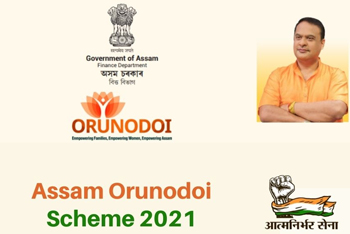 Declare July as 'Orunodoi' month scheme: Assam Hon'ble CM Himanta Biswa Sarma to new FM Ajanta Neog
Declare July as 'Orunodoi' month scheme: Assam Hon'ble CM Himanta Biswa Sarma to new FM Ajanta Neog
09 Jun, 2024
The Assam Health Minister Dr. Himanta Biswa Sarma held a press meeting on 12th August 2020 and announced a women empowerment scheme, called ‘Orunodoi’. This scheme is a very interesting initiative by the State government. It will directly empower the women who live in Assam. Dr. Himanta Biswa Sarma aims to achieve both economic development and women empowerment with this amazing scheme. "Test 123"
Under this, the beneficiary women will get the amount in her account. As per the state government, this scheme will be launched on 2 October 2020, and approx 17 lakh families will get Rs 830 every month for the next five years. As per the scheme, the amount will get those families who have an annual income of less than 2 lakh rupees. In this lockdown situation many families can’t go out for their jobs, and they don’t have enough money to get food, medicine, and daily usage things. If they will get this amount the people will have at least basic needs.
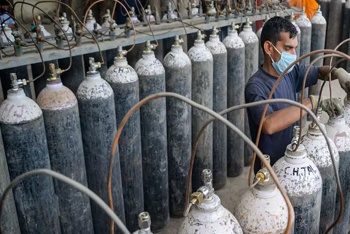 Assam govt to start oxygen plant in each civil hospital of state within a month.
Assam govt to start oxygen plant in each civil hospital of state within a month.
09 Jun, 2024
The Assam government is to start oxygen plant in each civil hospital of the state within a month. Health Minister Keshab Mahanta said in Nalbari on Thursday that this would help the patients. Mr. Mahanta said that target has been set to conduct 1 lakh COVID test daily in Assam. He also said that there is no plan to declare lockdown as of now.
Meanwhile, the army has set up 5 ICU and 45 oxygen beds at Tezpur medical college as requested by the Assam government. Chief Minister Dr.Himanta Biswa Sarma held a meeting with the officials at Majuli district on Thursday and reviewed the COVID situation.
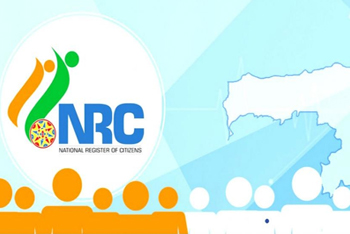 Assam government will move SC again for re-verification of NRC, says Dr.Himanta Biswa Sarma
Assam government will move SC again for re-verification of NRC, says Dr.Himanta Biswa Sarma
09 Jun, 2024
Hon’ble CM, Dr. Himanta Biswa Sarma on Wednesday said that his government would approach the Supreme Court again for a re-verification of the National Register of Citizens, The Hindu reported. In an interview to the newspaper, the newly elected chief minister said the government will move the court seeking re-verification for up to 20% of entries in areas bordering Bangladesh and 10% for interior regions.
“If the NRC checks out then we shall do nothing,” Sarma said. “But if there are discrepancies, we will ask for the Supreme Court’s guidance on the issue. We have been saying this for a while and we stand by this.”